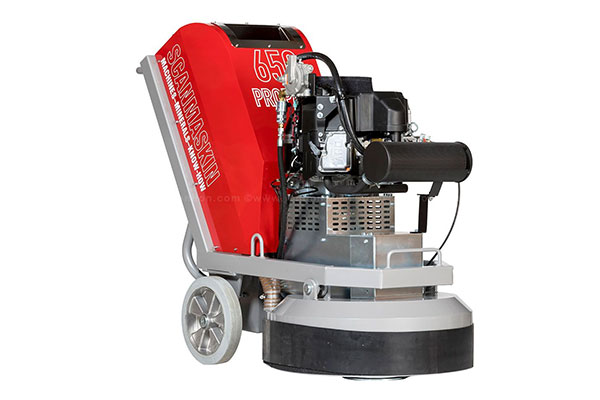As water or fire restoration begins, unaffected floors and contents need to be protected from inadvertent damage. Floors can be covered with Kraft paper or runner rugs to keep them from being damaged by foot traffic. Unaffected furniture can be cover with plastic to stop them from being covered with dust or other debris.
Homeowners should carefully relocate collectibles that can be easily damaged. Not everyone recognizes that that mantle clock is a valuable antique. If you happen to be a collector, nobody else is necessarily going to have the expertise and knowledge about items you collect like you have. Take the time to move these types of things to a safe place in your home, or if they are not easily moved, at least point them out to workers.
Restoring floors and contents during restoration work begins by understanding the influence that moisture can have on them. One of the first priorities for a restorer is to identify what has been affected by the water (or fire). Is the flooring engineered wood, laminate, or true hardwood? Are the fabrics organic silks, wools, or cottons, or are they synthetics? These questions need to addressed before the damage can be accessed and restoration can begin.
Some contents can be at risk for primary damage, actually coming into contact with the water. Some may be susceptible to secondary damage from being present in higher humidity as drying begins and moisture is put into the air. Picture frames hanging on walls can be an example of contents that may be affected by the secondary damage caused by humidity.
The smoke and soot from fires can cause untold secondary damage to contents. Both smoke and soot are acidic in nature and will continue to cause damage if left on contents and not addressed as soon as possible. And virtually every house fire is put out with gallons and gallons of water. Contents are not only covered by fire residue, but they are wet also.
Water, Wood and Wood Flooring
Many wood items in homes today are what restorers call “was-wood”, at one time it was wood but due to the manufacturing process it is now only composed of wood. Great examples are MDF (medium-density fiberboard), engineered lumber, and particle board. Interiors of cabinets and vanities, some furniture, and bookcases often are made with these types of “wood”. Products constructed of these materials will rapidly absorb water, swell, and may become permanently damaged. When this happens there is nothing that can be done to restore them and replacement or acceptance are the only options for the owner.
Wood floors can be solid hardwoods, engineered woods, laminates, or water-proof vinyl planks. Each has its own unique properties:
Laminates – these flooring materials absorb water quickly and warp almost as fast. Usually there is some type of cushion material between them and the subfloor. Water becomes trapped between these different layers and there is virtually no way to get the water extracted before permanent damage is done to the flooring. In 99% of these cases, tearing out the laminate floor and replacing it is the only option.
Engineered woods – these are generally pre-finished planks. A lot depends on how these planks were manufactured as to how they will respond to wetting. Sometimes the quick action of the homeowner and the restorer can save these types of floors, at other times they can’t be saved.
Solid Hardwoods – true hardwood floors can often be saved as long as drying activities begin quickly. Successfully drying solid hardwood takes special knowledge and equipment and it is not recommended that the DIY person attempt to restore a water-damaged hardwood floor. Cupping can be addressed, but once a hardwood floor buckles, more expensive repairs or replacement will be required.
Luxury Vinyl Flooring – manufactures claim that vinyl plank flooring is waterproof. That may be so, but these floors should not be ignored and left to dry on their own. Vinyl planks should be carefully taken up and dried so that the subfloor under them can be dried. Once everything is dry, the vinyl floor can then be reinstalled.
Wood Furniture Damaged By Water
Solid hardwood furniture absorbs water very slowly. Water also comes out of solid hardwood furniture very slowly. If you have wooden furniture that has been affected by water, it needs to be moved out of the water as quickly as possible. I did not say out of the area, just out of the water. The best place for wooden furniture to dry is going to be where all of the drying equipment is.
Furniture should be placed on Styrofoam blocks as quickly as possible so that the legs or bottoms are no longer in direct contact with the water. If you don’t have access to Styrofoam blocks, aluminum foil will work in the short term. DO NOT remove the furniture from the areas to be dried. It can take months for wood to dry on its own. Leave wet furniture where the restoration equipment can help it dry out while the rest of the room is drying.
Upholstered Furniture and Clothing
Upholstered furniture that is damaged by water or fire requires immediate attention, particularly in fire damage situations. The longer soot and smoke remain on these materials, the more damage will be done. If it is only water damage, the pieces need to be dried and then professionally cleaned.
The same goes for clothing. There are companies that only clean and deodorize clothing after a loss. Restoration companies and insurers know who these specialists are. Don’t hesitate to seek them out if needed.
Electronics and Appliances
It’s not surprising that electronics and water don’t mix very well. If something of yours like a TV, home theater projector, washer and dryer, or audio components have come into direct contact or been submerged in water, you need to have them checked out before using them. If these items were just in the area of a water loss, they may have still been affected by the excess humidity. It’s best to leave them in place until the area has been dried before considering plugging them back in or turning them on.
Trust Our Professionals
Water Mold Fire Restoration technicians encounter contents that have been affected by fire or water almost every day. They have been trained to recognize issues like these and understand the action that must be taken to further protect or restore them. Call us at 800-905-0277 and let our experts assist you in recovering from a water or fire loss. We respond 24/7 to every call. Or if you would prefer, you can contact us via email at help@watermoldfire.net.








